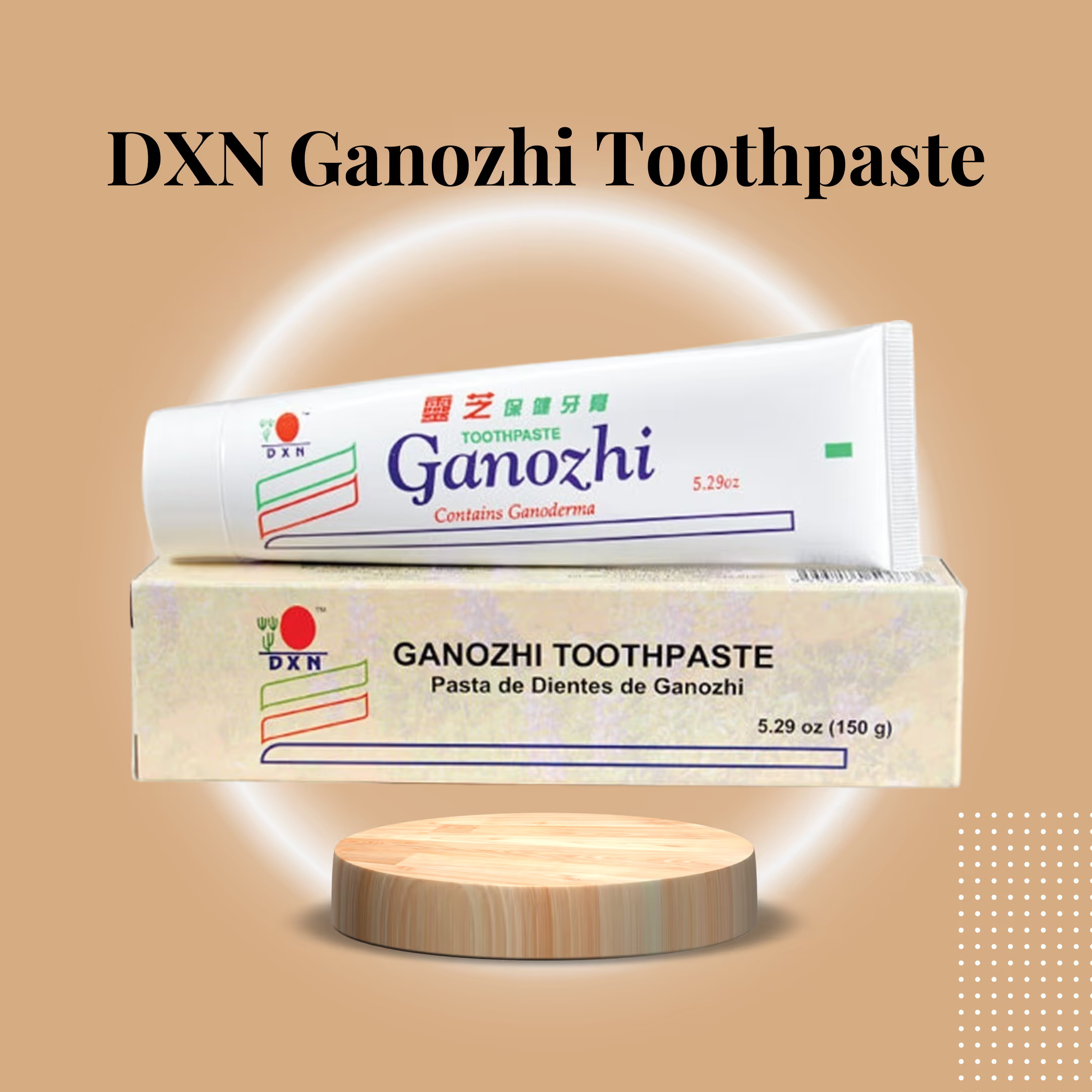What makes medicinal mushrooms different — and why the RG/GL approach matters
Medicinal mushrooms are not valued for their calories or basic nutritional value. They’re sought for complex bioactive molecules—especially polysaccharides (like beta-glucans) and triterpenoids—that interact with immune pathways, inflammation, liver detoxification, and cellular signaling. Different mushroom parts concentrate specific compounds. The mycelium is richer in polysaccharides, directly stimulating immune cells. The fruit body accumulates triterpenoids that modulate inflammation and enhance liver function.
DXN Mycovita purposefully combines these two life stages. Why? The pairing delivers complementary benefits: rapid immune activation from GL’s beta-glucans and lasting systemic stability from RG’s triterpenoids. This approach aims to offer both immediate protection (against acute threats) and enduring resilience (by buffering chronic stress and aiding detoxification).
The two molecular toolkits: what each brings to the table
Polysaccharides — the immune messengers
Polysaccharides are long-chain carbohydrates that interact with receptors on immune cells. Beta-glucans — a key class — bind to receptors on macrophages and dendritic cells, essentially flagging immune attention and enhancing pathogen detection. This boosts innate immunity and primes adaptive responses without causing reckless stimulation. Polysaccharides can also function as prebiotics, providing food for beneficial microbes in the gut microbiome. Since the gut houses most of the body’s immune cells, a healthier microbiome translates into better systemic immune regulation.
Triterpenoids — the regulatory modulators
Triterpenoids (for example, ganoderic acids) are smaller, often bitter molecules concentrated in the fruit body. Their strengths include anti-inflammatory regulation, hepatoprotection (supporting liver function), and modulation of metabolic and vascular signaling pathways. While polysaccharides help the immune system detect and respond, triterpenoids temper excessive inflammation and support the organs responsible for chemical processing and cleanup — especially the liver. Together they form a balanced approach: one side wakes up and informs the immune system; the other prevents overreaction and helps the body handle the biochemical fallout.
How immunomodulation differs from blunt “immune boosting”
People often think that “immune support” means boosting the immune system. That’s simplistic and, in some cases, harmful. True immunomodulation means guiding the immune system toward balance: stimulating it when it’s sluggish, and calming it when it’s overactive. Ganoderma compounds tend to do exactly that — they improve macrophage and natural killer (NK) cell activity when needed while helping normalize cytokine profiles so inflammation doesn’t become chronic. That balance reduces susceptibility to infection without increasing the risk of hypersensitivity or autoimmune flare-ups.
The gut connection: Mycovita as a multi-pathway mediator
A powerful, often under-appreciated mechanism is the gut-immune axis. Polysaccharides act as prebiotics, providing food for beneficial gut bacteria. Those bacteria produce metabolites (like short-chain fatty acids) that regulate immune cells and systemic inflammation. Because Mycovita supports both immune cell activation and the microbiome ecosystem, it helps coordinate a more comprehensive and durable immune response.
Systemic optimization: circulation, detox, and stress resilience
Beyond immune effects, Mycovita targets three systemic areas that shape long-term health:
1. Circulation and oxygen delivery
By improving microcirculation and reducing oxidative stress on vessel linings, the combined mushroom compounds can enhance oxygen and nutrient delivery to tissues. That supports endurance, recovery, and even cognitive clarity because organs get what they need more efficiently.
2. Liver support and detoxification
Triterpenoids help modulate liver detoxification enzymes (particularly Phase II pathways) and protect hepatocytes. A healthy liver handles toxins, metabolic byproducts, and environmental chemicals more effectively — which reduces systemic load and allows cells to prioritize repair and regeneration.
3. Stress adaptation and hormonal balance
Ganoderma functions as an adaptogen, helping the body maintain equilibrium in the face of diverse stressors. There’s evidence that fungal blends can influence the hypothalamic–pituitary–adrenal (HPA) axis, thereby improving cortisol balance and supporting recovery from physical or psychological stress. This means improved energy over time, reduced catabolism from chronic stress, and enhanced resilience to overtraining or burnout.
Who benefits most from a dual-stage Ganoderma powder?
This product profile fits certain groups particularly well:
- People who frequently get colds or feel chronically run-down and want a safe, long-term resilience strategy.
- Those pursuing a gentle detox or attempting to support liver function alongside dietary improvements.
- Athletes and active individuals who need better recovery, reduced oxidative stress, and improved oxygen use.
- Midlife health optimizers seeking immune balance, improved sleep, and systemic stress resilience.
- Anyone building a layered supplement plan — using Mycovita as a foundational, broad-spectrum adaptogen and pairing targeted additions for specific goals.
Quality control: why cultivation, processing, and traceability matter
Not all mushroom products areequal. Levels of active compounds depend on strain, growing material, climate, and processing. Controlling the full process from cultivation to packaging reduces variation and contamination risk. DXN’s vertical approach aims for consistent polysaccharide and triterpenoid levels using controlled steps, and quality testing.
The powder (sachet) format: advantages and practicalities
Mycovita’s powder sachet form enables “therapeutic” doses. Capsules restrict the amount of active compounds per serving; powder provides a practical “mega-dose” in one serving—helpful for high polysaccharide intake. Powder dissolves in water or smoothies and can be adapted to different regimens. However, powders must be carefully sourced and packaged to avoid moisture and light exposure.
Actionable dosing protocol: how to start, progress, and monitor
Because this is a concentrated powder, adopting a titration strategy is recommended:
Titration & baseline protocol
- Week 1 — Adaptation: Start with half a sachet daily. This gentle introduction allows your system to acclimate and reduces the chance of transient “detox” effects (mild digestive changes, brief energy shifts).
- Week 2 onward — Maintenance: Move to one full sachet daily for ongoing support. Maintain this daily schedule for at least 4–12 weeks to assess effects.
Timing & mixing
- For best tolerance, consider taking your serving in the morning—either on an empty stomach (30–60 minutes before eating) or with breakfast. Easily mix the powder into water, juice, or smoothies. If you experience mild digestive sensitivity, consider taking it with food.
How long to expect to see changes
- Subjective effects (such as energy and sleep quality) can appear within days to a couple of weeks.
- More objective markers — fewer sick days, measurable improvement in recovery, or lab markers — generally appear within 4–12 weeks of consistent use. For chronic or systemic conditions, long-term use, combined with lifestyle improvements, yields the most durable outcomes.
What to watch for — transient effects, interactions, and safety considerations
Transient adaptation signs : Some people notice temporary changes during the first week: mild digestive adjustments, slightly different energy patterns, or increased urination as the body processes mobilized materials. These are usually short-lived and resolve as balance is established. If symptoms persist or worsen, reduce the dose and consult a healthcare professional.
Medication interactions & special populations
- Pregnancy & breastfeeding: There is limited safety data; avoid use unless advised by a healthcare professional.
- Immunosuppressants / autoimmune conditions: Discuss with your prescribing doctor; fungal compounds influence immune signaling.
- Anticoagulant/antiplatelet drugs: Some mushrooms can affect clotting pathways — seek medical guidance.
- Blood pressure or blood sugar medications: Because mushroom products can influence metabolic pathways, monitor closely and consult your provider for possible medication adjustments.
Allergies: If you have a known fungal allergy, do not consume Mycovita.
Troubleshooting common situations
- Feeling overly stimulated or having insomnia: Try taking the dose earlier in the day or reduce to half a sachet.
- Mild digestive upset: Take the powder with food or reduce the dose while your body adjusts.
- No noticeable improvement after 12 weeks: Reassess lifestyle (sleep, diet, exercise), confirm product authenticity/quality, consider bloodwork to identify other limiting factors (thyroid, micronutrients, etc.), and consult a clinician.
Complementary pairings — building a targeted stack with Mycovita as the base
Mycovita shines as a foundational product. For focused outcomes, pair it with targeted supplements:
- Cognition — Lion’s Mane: Use Lion’s Mane for nerve growth factor (NGF) support and neuroplasticity while Mycovita maintains systemic balance.
- Energy & endurance — Cordyceps: Cordyceps supports ATP production and oxygen utilization; combine with Mycovita for performance and recovery synergy.
- Detox completion — Fiber blends / MycoVeggie: If Mycovita’s detox mobilizes compounds, ensure mechanical elimination with fiber, hydration, and gut-supporting herbs to prevent reabsorption.
- Antioxidant support — Vitamin C, polyphenol-rich foods: These complement the fungal antioxidant mechanisms and support liver and vascular health.
Simple sample daily routine (example)
- Morning: Half a sachet of Mycovita in water or smoothie (start with half a sachet in week 1).
- Breakfast: Whole-food meal (protein + fiber + healthy fats).
- Midday: Engage in light movement or a brisk walk; drink hydrating fluids.
- Evening: Enjoy a balanced dinner and prioritize sleep hygiene (a dark room and a wind-down routine).
- Weekly: Track subjective metrics — energy, sleep, recovery, mood — and any illness episodes. Consider conducting monthly or quarterly lab checks if using Mycovita to achieve specific clinical goals.
Monitoring and measuring progress
To determine whether a supplement is helping, use both subjective and objective measures:
- Subjective: energy, sleep quality, cognitive clarity, frequency and severity of infections, recovery after workouts.
- Objective: blood panels (lipid profile, liver enzymes, CRP/inflammatory markers), blood pressure, fitness tests (VO2max or time-trial improvements if athletic), or basic metabolic checks (fasting glucose/A1c if relevant).
- Track over 8–12 weeks for meaningful changes.
Choosing a high-quality product — what to ask the brand
- Do they control cultivation and processing (vertical integration)?
- Are polysaccharide and triterpenoid concentrations standardized or disclosed?
- Is there third-party testing for contaminants (heavy metals, mycotoxins)?
- Is the product transparent about the RG/GL ratio?
- How is the product packaged to preserve potency (sachets, desiccants, light-protective packaging)?
.avif)





